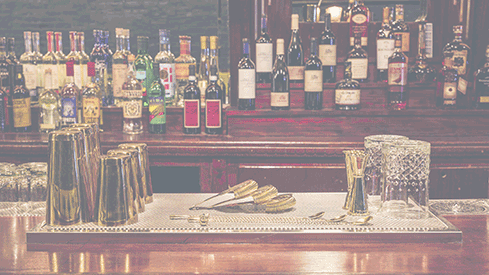

Richard Wayne Penniman was born today in 1932 in Macon, Georgia. Growing up in Macon in the 1930s was tough. It was even tougher if you were a black kid. Imagine what it would be like to try and live in Macon as a handsome, flamboyant, bi-sexual black kid. That was Little Richard’s cross to bear as a youngster and he survived to become one of the most influential musicians of the 20th century.
Little Richard was the third of twelve children in a highly religious household. His father was a minister and a bootlegger and his grandfather and uncles were preachers as well. Much of Richard’s early life was spent in and around the church and he grew up singing the religious songs of the day. Once in high school, Richard joined the marching band and learned to play saxophone in a matter of days.
He picked up a part-time job selling concessions at the local auditorium. Gospel singer Sister Rosetta Tharpe was in town in October of 1947 and she heard Little Richard singing a few of her songs before the show. She was impressed by his voice and invited him to come on stage and open the show for her. Richard was instantly bitten by the performing bug and he decided to pursue a life in music.
He had already been kicked out of the house by his father because of his homosexual tendencies and Richard had a number of problems with people at school and in the community. He decided a change of scenery would do him good so he joined up with a travelling road show called Dr. Hudson’s Medicine Show. Richard would go on to join vaudeville troupes, perform in drag and eventually tour the South as part of the musical performers on the Chitlin Circuit.
In 1951 he signed with RCA and put out a few singles. Around this same time he learned to play piano and the Little Richard we all know was born. It took a few years of additional seasoning before he burst on the popular music season but all the seeds were being planted. In 1955 he and songwriter Dorothy LaBostrie reworked the lyrics to a song he had been performing on the Chitlin Circuit called “Tutti Frutti”. The original lyrics were too racy for the radio – Tutti Frutti, good booty/If it don’t fit, don’t force it/You can grease it, make it easy – so they made a few revisions and suddenly Little Richard had a hit song which sold over a million copies.
His next hit song, “Long Tall Sally”, came in 1956 and went to #1 on the R&B chart and entered the Top 10 on the Pop chart. This was a time when music was just as segregated as society was and proper white folks didn’t listen to “race music”. Little Richard shattered this idea as his concerts began to draw mixed crowds even in the Deep South. His shows became must-see events due to the quality of his music and his theatrical playing style.
By 1957 Little Richard was a millionaire and he moved to Los Angeles. He toured Australia with Gene Vincent and Eddie Cochran and stunned the musical world when he announced his retirement mid-tour. He enrolled in a Bible college and started touring the country preaching and playing gospel music. He returned to secular music in 1962 and toured with Sam Cooke. Little Richard was once again a worldwide star and he was approached by Brian Epstein, the manager of a new band from England called The Beatles. Epstein wanted The Beatles to open for Richard while he toured England and Richard agreed. In 1964 a guitarist named Jimi Hendrix joined Little Richard’s backing band, The Upsetters.
He continued performing through the 1960s but drug and alcohol abuse caught up with him in the 1970s. Richard would never again be as commercially successful but he remained an icon to other musicians. If imitation is the highest form of flattery, what does that say about Elvis Presley, Gene Vincent, Bill Haley, Eddie Cochran, The Everly Brothers and Jerry Lee Lewis recording covers of Little Richard songs?
James Brown cites Little Richard as an influence and credits him with being the first to put the funk into rock and roll. Artists as diverse Paul McCartney, Bo Diddley, Michael Jackson, George Harrison, Mick Jagger, Otis Redding, Ike Turner, Keith Richards, Bob Seger, David Bowie, Freddie Mercury, Lou Reed, Elton John, Rod Stewart, Bon Scott, Angus Young and John Fogerty also claim Little Richard as an influence. Underneath Bob Dylan’s photograph in the 1959 Hibbing High School Yearbook he listed his ambition: “To join Little Richard”.
In 1986 Little Richard was among the first ten inductees into the Rock and Roll Hall of Fame. If you can think of another musical hall of fame there’s a good chance that Little Richard is in there, too. He is in the Songwriters Hall of Fame, Apollo Theater Hall of Fame, Nashville’s Music City Walk of Fame, Blues Hall of Fame, Louisiana Music Hall of Fame, Rhythm and Blues Music Hall of Fame and a bunch more. Little Richard is about as important to rock and roll music as the guitar is and will forever be remembered as one of rock’s greatest stars.
“The Girl Can’t Help It” 1956:
“Lucille” 1957:
“Tutti Frutti” 1955:
“Long Tall Sally” 1956:
Eddie Murphy on Saturday Night Live – The Little Richard Simmons Show 1981:
https://screen.yahoo.com/little-richards-simmons-show-000000345.html
